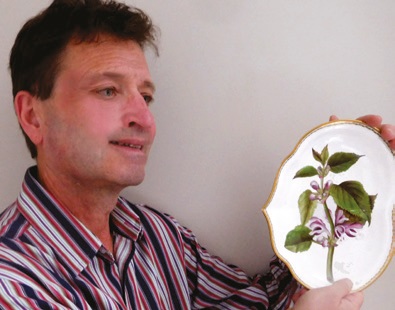Collecting Derby porcelain – an expert guide
 Porcelain specialist Brad Dover of Jupiter Antiques, an exhibitor at this autumn’s Antiques for Everyone at the Birmingham NEC, reveals everything you need to know about collecting Derby porcelain.
Porcelain specialist Brad Dover of Jupiter Antiques, an exhibitor at this autumn’s Antiques for Everyone at the Birmingham NEC, reveals everything you need to know about collecting Derby porcelain.
Has there been a revival in collecting Derby porcelain?
Rising prices of porcelain and a crash in interest rates put pieces out of the price range of many longtime collectors. Things now have just about settled down. Prices are realistic, and collectors can again afford some of the pieces that once were out of reach. This has also allowed new collectors into the market.
I foresee a gradual increase in prices for the next few years.
How is the market for Derby?
The market for collecting Derby porcelain has always been fairly constant. Very early pieces have always been desirable and prices have been less affected by market fluctuations. The same can be said of the Chelsea Derby market where collecting has always been strong. The so-called “designer” pieces have of the 1785 to 1800 period have always been highly sought after but, after rising to dizzy heights in the 1990s, the new millennium saw a great crash in this over-inflated market.

After 1800, production at Derby slowly deteriorated and only the best pieces of that period command good prices. Royal Crown Derby-signed works, so sought after from the 1980s, crashed in 2007 as a result of the financial crisis, with several large collections suddenly appearing on the market. This market is slowly clawing its way back.
Is there a particular Derby maker or factory that is most sought after?
Derby artists stand above all others in the history of Derby collecting. In the 1790s William Billingsley – one of the most talented artists of his period – was working at Derby, Pinxton, Swansea, Nantgarw, Worcester and Coalport. Billingsley’s roses have worldwide fame.
In the Royal Crown Derby age, Desire Leroy stands above all else. Leaving Sevres for Minton, then Derby, he brought with him skills and designs that influenced production to this day. His signed pieces have managed to survive the faltering economy all but unscathed.
Who is collecting Derby today?
Generally middle-aged people, or older, and mostly from the UK.
What areas would you recommend for collectors to explore?
My personal recommendation would be pre-1790 Derby figures with minimal damage or repair (such pieces are rarely perfect because of their vulnerable construction), or artist attributable porcelain of 1780 to 1800, signed Royal Crown Derby in good condition.

